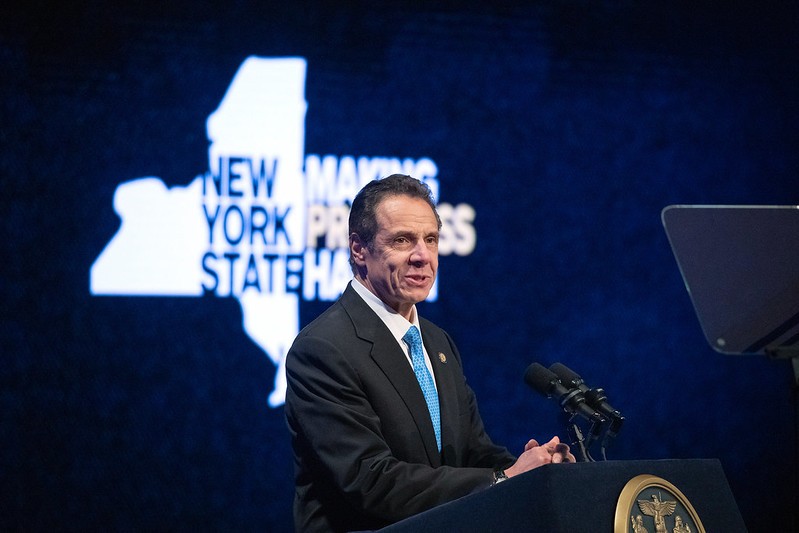Bond Act would fund land protection, habitat restoration, clean water projects, fishery protections, expand renewable energy resources, and protect wildlife habitat, among many other green projects
Bond Act would be voted on in November 2020
State of State also talks about significant changes to improve the management of the High Peaks Wilderness Area with new shuttles, sustainable trails, public education and monitoring
Governor Andrew Cuomo’s 2020 State of the State speech included some good news for the Adirondack Park. One major highlight was his proposal for a $3 Billion Restore Mother Nature Bond Act that will support a variety of pressing environmental and climate change challenges across New York. This proposal is the first listed in the State of the State book that accompanied the speech.
The details and final scope and elements of the Restore Mother Nature Bond Act will be negotiated as part of the state budget, due by April 1st. It will then need to be approved by the state’s voters in November, but if passed this would be the biggest environmental bond act in New York’s history. The Restore Mother Nature Bond Act marks the Governor’s intention to make major investments in the protection of natural resources across the Adirondacks and New York and provide support for a variety of climate change mitigation efforts.
In the Restore Mother Nature Bond Act, the Governor proposes funding to “reduce flood risk and revitalize critical fish and wildlife habitats by connecting streams and waterways, right-sizing culverts and dams, restoring freshwater and tidal wetlands, reclaiming natural floodplains, restocking shellfish populations and upgrading fish hatcheries, preserving open space, conserving more forest areas, replanting more trees, reducing contamination from agricultural and storm water runoff, and expanding renewable energy.” Many pieces in this litany of priorities are pertinent and applicable to the Adirondack Park.
The $3 billion bond act is a decade’s worth of the $300 million annual New York State Environmental Protection Fund that will be allocated immediately. Many of these programs will benefit the natural resources and rural communities in the Adirondack Park. With the exception of “restocking shellfish populations,” though some native mussels in the Adirondacks are threatened, all of the other issues enumerated by the Governor will help protect the Adirondacks. Many worthwhile projects could be funded in the years ahead, from culvert right-sizing that enhances habitat to land acquisition to stewardship of state lands to stormwater control to fighting climate change with renewables and reclaiming floodplains.
The State of the State also included a focus on the High Peaks Wilderness where the Governor committed to “deploy sustainable trail crews to make trails more durable to increased use and analyze and develop new visitor flow solutions to better manage traffic and hikers to provide a more enjoyable, less congested user experience. The State will also initiate education programs to enlist the public in protecting public lands through stewardship practices that minimize the impact to natural resources and ensure positive recreational experiences for future generations.”
These efforts were coupled with an announcement of $1.2 million to fund a shuttle system for the Route 73 corridor that will operate 16 hours day to ferry hikers from parking areas in Keene to trailheads. Funding for sustainable trails, public education and operationalizing facilities such as shuttles and parking lots, along with scientific monitoring of public use and natural resource impacts, are all necessary to build a comprehensive management program to meet the challenges of heavy public recreational use in the High Peaks Wilderness Area.
For the past two years the Department of Environmental Conservation has organized a trail crew to work in the High Peaks. In 2019, the trail crew worked on the new trails on Cascade Mountain and Mount Van Hoevenberg. Progress is slow, but the work completed was impressive. The State of the State commitments to the High Peaks, follows the Governor’s comments early last fall that concerns about overuse in the High Peaks were “legitimate” and DEC’s efforts to step up its stewardship by regulating parking, funding trailhead stewards, assisting local communities, getting serious about sustainable trail building and starting a new management planning process.
A State of the State speech is a political spectacle that packages a collection of applause lines around lots of big numbers and a lot more pretty words. The first test of the Governor’s $3 Billion Restore Mother Nature Bond Act, and his newfound commitment to improving the management of the High Peaks Wilderness, will be seen in the numbers he puts on lines in his proposed new state budget later this month that will show the reality of all his pretty words. The next test is the level of support for these measures in the State Legislature and from the public.
This Legislature has pushed this Governor like no other. The stunning legislative accomplishments in 2019 came from years of pent up demand after major issues were bottled up for years in the State Senate, which saw a change in leadership. The Restore Mother Nature Bond Act is an effort by this Governor to outflank legislative leaders to show his green credibility. The Legislature will certainly push back and seek to make it their own. Thankfully, the Adirondack Park is poised to benefit immensely in a competition among New York’s political leaders who are all working to sew their green bonafides.






